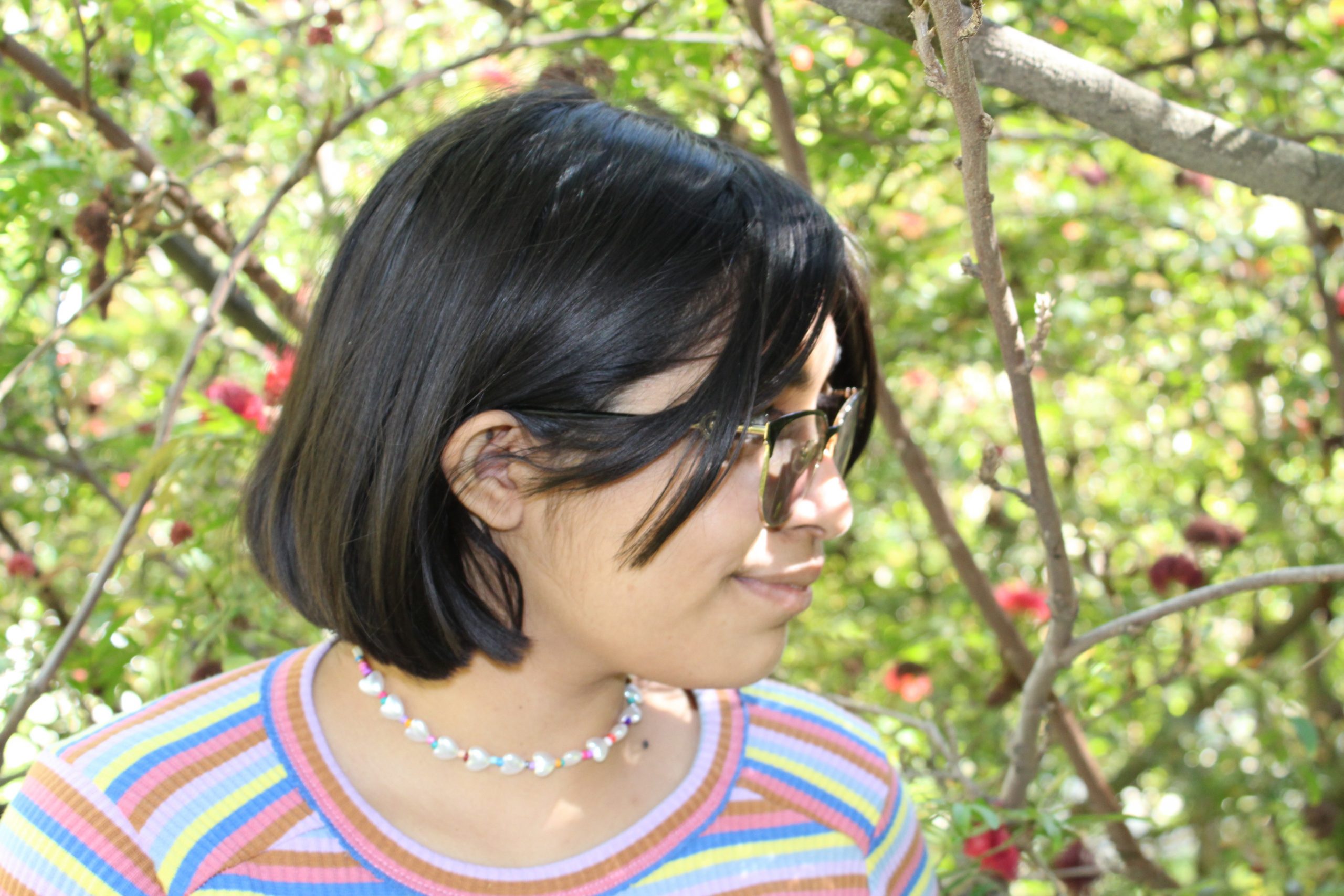Photo by Zoë Colliins (she/her)
I used to wonder if there was something wrong with me. I had an affinity for all genders but was often told that it was impossible because, eventually, I’d have to “choose” my future lover and finally proclaim my respective homosexuality or heterosexuality. Notions that applied to homosexuality like, “we don’t get to choose who we love,” didn’t equally apply to bisexuality. Bisexuals had the best of all worlds, their dating pool bigger than heterosexuals and homosexuals combined (kinda).
“I think I like girls, too,” I remember telling my twin in seventh grade.
Too.
That “too” is fundamentally important.
I didn’t lose my school crushes on boys, but I started to be more open about my crushes on girls. Being bisexual when I was in my early teens was awkward and messy, mixed in with the embarrassment of puberty and blossoming teenage hormones. I wore nerdy t-shirts and baggy jeans, my hair was long and messy, and I wore rainbow bracelets and glasses. I wasn’t the cool bisexual with a leather jacket or with nice eyeliner. I was the awkward kid with weird interests and that included love interests. I loved Loki from “Thor” but equally loved Meenah from “Homestuck.” But I was also new, a baby queer that didn’t have anyone to talk to about my “newfound” bisexuality.
When I turned 18, I grew into my bisexual label. I no longer felt awkward about it, and it helped that many more people were openly identifying bisexual. Sexuality was no longer a binary of straight or gay but, rather, a spectrum in which anyone could place themselves. I was open about it, proclaiming on Tinder that I was bisexual. Proudly stepping into a lacking love life, I was finally okay with being bisexual. I was no longer worried about what other people thought because I was so caught up with just existing.
Still, the nagging pressure of “choosing” whether or not I was queer lingered in the back of my mind. I had several debates about it in my head, whether or not I could call myself “queer” if I started dating someone of the opposite sex. At the time I was also starting to be more open about myself being non-binary, but I still presented a lot more feminine, people presuming that I was a woman.
Part of the pressure came from people’s visceral reactions when I revealed I was bisexual. Those moments were rough. There were the fetishists, the couple looking for a unicorn, the cishet men seeking a threesome with their girlfriend. Then there were the exclusionists — the people who labeled me as a cheater and evil for the crime of being bisexual. Debates on whether or not my sexuality existed. Each interaction left me feeling hopeless for love, craving intimacy without fetishization and without judgment.
Sometimes, I think about the story of Tila Tequila and bisexual dating tropes. Tila Tequila was once a bisexual MySpace icon, and she even had her own bisexual dating TV show called “A Shot of Love with Tila Tequila” from 2007 to 2008. MTV produced the show, and it had both cis, straight, male contestants and cis, lesbian contestants (with the exception of another bisexual in the second season). The show was filled with bisexual tropes, Tila being a wildcard in the world of dating and binaries of straight or gay. The show wasn’t the best representation of bisexual love, and it reinforced so many negative stereotypes that bisexuals were sexual wildcards pretending to be gay. We bisexuals aren’t Tila Tequila.
But then there were moments when I found other people who had similar experiences with their sexualities. Those moments were the best. I had dated a lot of people before I found my current partner and have met a total of four other bisexuals. I once went to a party with a guy I met on Tinder, and we both got drunk and admitted we were both bisexual. It was a freeing moment, one that painted my experience with the broader community as accepting. We ended up being friends after (and eventually lost contact with each other, but that’s a different story). I think most bisexuals can sniff out other bisexuals, and it’s great having conversations with other people that understand the struggle.
I was not strict about dating other bisexuals. My only two requirements for my future partner were that a) they loved me as much as I loved them and b) we both weren’t keen on having children. If my partner happened to be bisexual (or anywhere not on the monosexual spectrum), that was by coincidence. My relationships are ones that naturally develop over time with people that I’ve hung out with.
Still, my romantic lovers were never “choices.” My current partner wasn’t a “choice” to me. It’s not like I had a list of people and rearranged them by order of preference, and it wasn’t like I was thinking about how other people would perceive my relationship. It also helped that we started dating during the pandemic, alleviating so many pressures that IRL bisexual dating had. There were no judgements about my bisexuality, no judgements about who I had been with.
“Choice” is nothing but a loose, abstract concept. I met my now partner at a Bernie Sanders fundrager, recognizing him as one of the guys who lived above my dorm my freshman year. I would’ve chosen him in a heartbeat if we went with the idea that “choice” is real for bisexuals, but he was just an amazing coincidence. And for bisexuals, that’s what our partners are: amazing coincidences, not choices to to be ranked on a spectrum of straight or queer.
Credits:
Author: Judah C (They/Them)
Photographer: Zoë Collins (She/Her)
Copy Editor: Bella (She/They)

